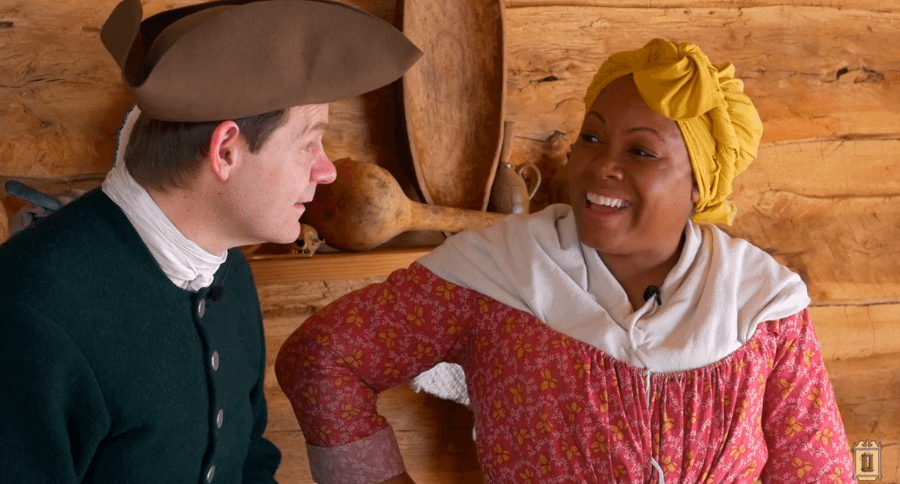This video is fascinating because it's presented in an 18th century reenactment. Wonderful!
Jon Townsend and Brenda Parker present an interesting and fairly simple recipe for fried catfish. What makes it so interesting is the manner and setting in which the present this recipe.
Parker is an historic interpreter at the George Washington Mount Vernon estate. She portrays Silla, a slave on the estate who teaches Jon Townsend how to prepare and fry a catfish, a staple at Mount Vernon during George Washington's time.
It's really quite wonderful and a great endorsement for Mount Vernon, a place you can visit that will give you so much more than just a glimpse into 18th century life. You can immerse yourself into life on the estate during that time period, and possibly come away with a much deeper understanding of what it was like to live in the 1700s.
Parker portrays Silla with great passion, dedication and thoughtfulness.
Parker sighs and says thoughtfully, "I have a very close, intertwined relationship with both, and all of the characters I portray here on the estate. The reason being that I feel that they are all my ancestors...they're all my great-great-greats. And that in speaking for them, I'm allowing them to speak through me, and tell our stories the way that they should be told."
Below is Townsend's video interview with Brenda Parker, in which she talks about her role as an historic interpreter. There are a few surprises Parker discovered in researching the historic person of Priscilla, which have created an even stronger bond with the real-life historic woman.
Parker has come to see Silla as a woman of great strength and courage. She stood up for what she believed in during a time when undertaking such actions were really quite dangerous.
"So, my bringing history to life, I'm hoping that it is helping people to start to appreciate our rich, beautiful diverse history that we have here in this country," Parker says.
"And by being able to speak to the lesser-spoken-about aspects of our American history, that they would start to gain a bigger appreciation for everything that has taken place over the period of time, and decades and centuries and what have you, to get us to where we are right now...this awesome, strong, diverse country that we have here."
Parker point her finger at the viewer, and asks a poignant question:
"Imagine it was your story, three generations from now, that somebody wanted to tell. Would you want somebody that is not related at all, to stand and to read a narrative, disconnected? Or would you want somebody that is possibly connected, to your lineage, to your line, to express the fears, the concerns, the love, the hope that must have gone through the very heart and soul of these people? You have to do it, because if we don't speak, who's going to speak for us?"
As for the fried catfish, it is a simple recipe. But man, does it ever look good. Breaded catfish spiced ever so slightly and fried to a golden brown in bacon fat with turnip greens. Delicious!
It's colorful and looks incredible. This recipe or some variation of it is one I'm sure most of us have prepared and enjoyed, but I have a feeling that if we prepared it with rustic implements and over an open fire it would be even better.
And perhaps now, you'll have an entirely different appreciation for the rich history underlying this dish.
Like what you see here? You can read more great articles by David Smith at his Facebook page, Stumpjack Outdoors.
NEXT: MAKE UP A BATCH OF PEMMICAN, HISTORIC BACKCOUNTRY SUPER FOOD




